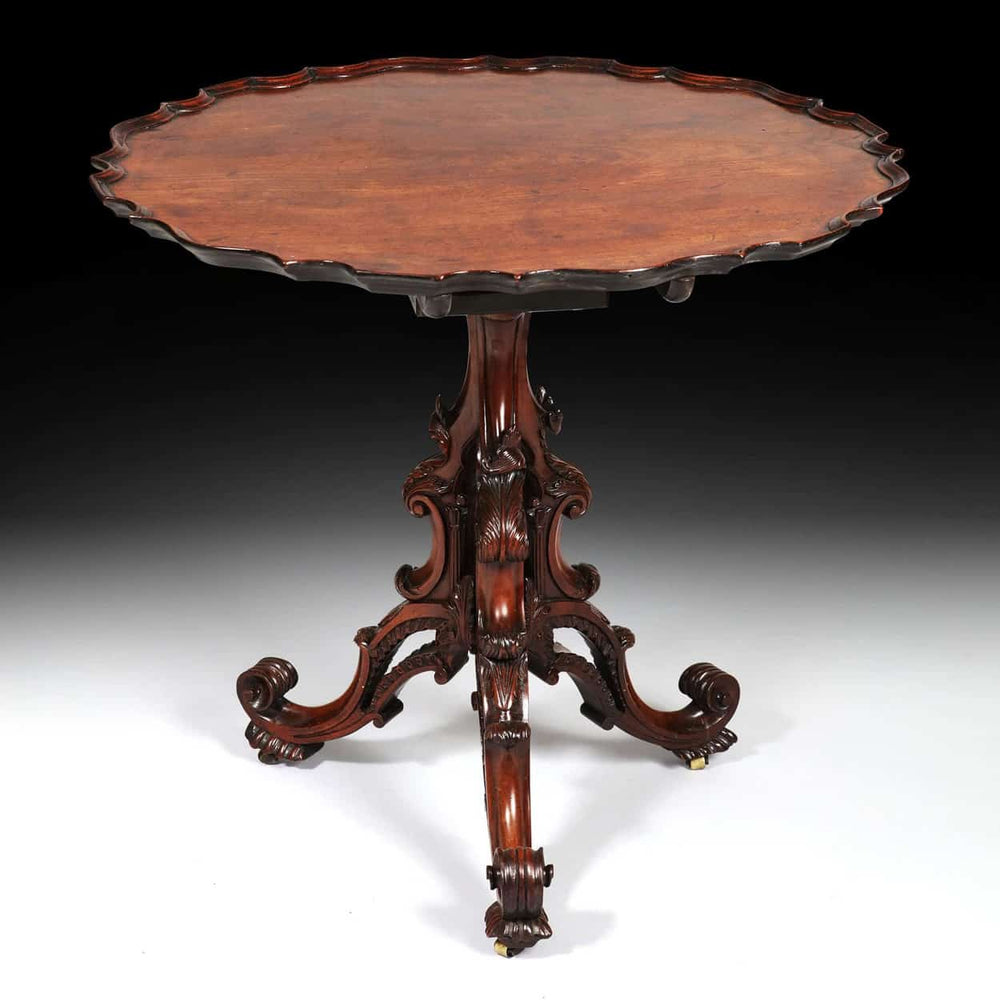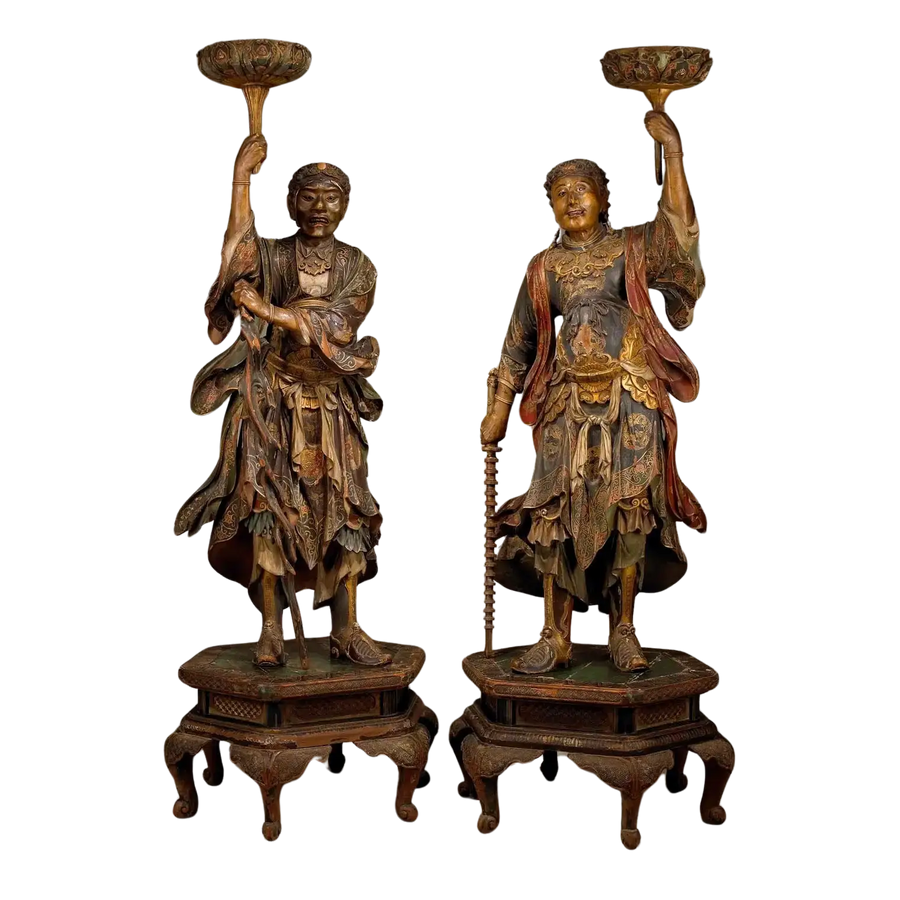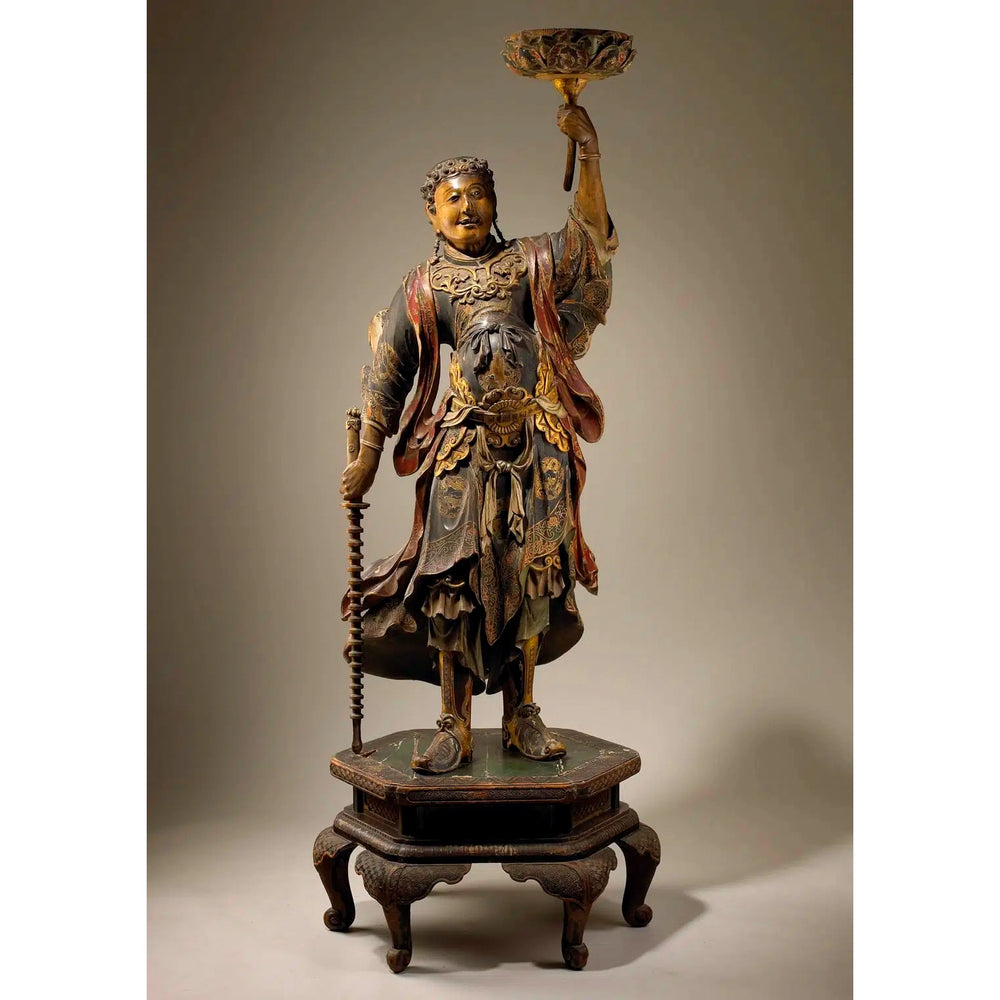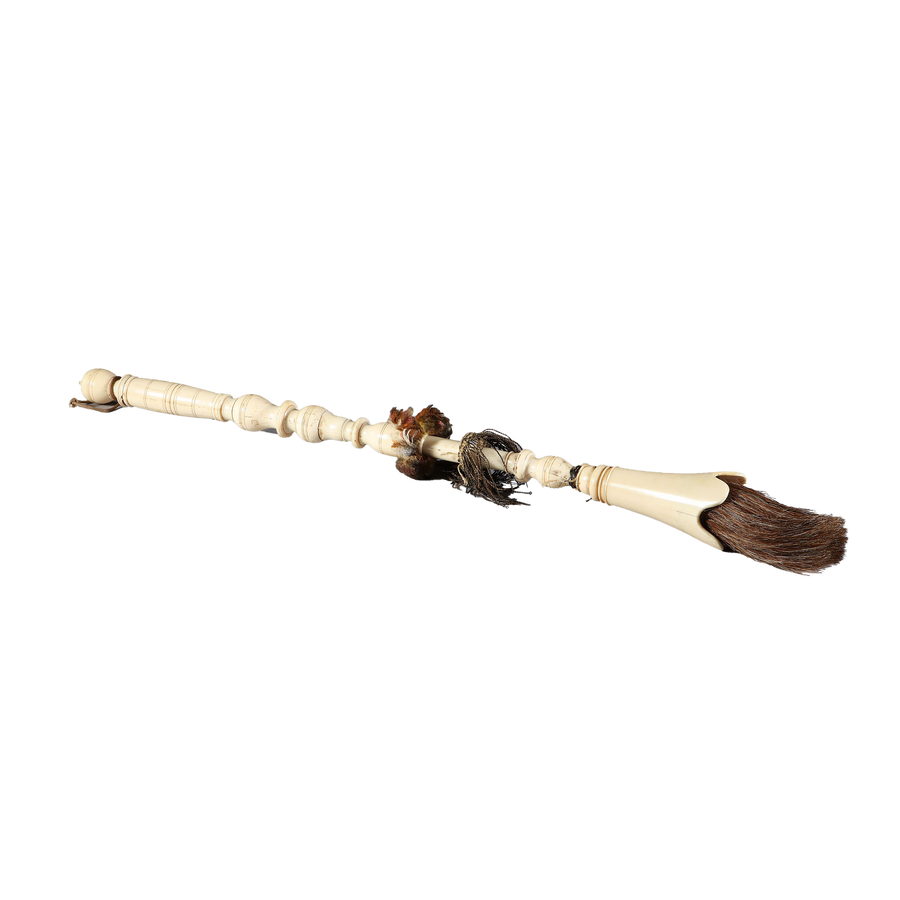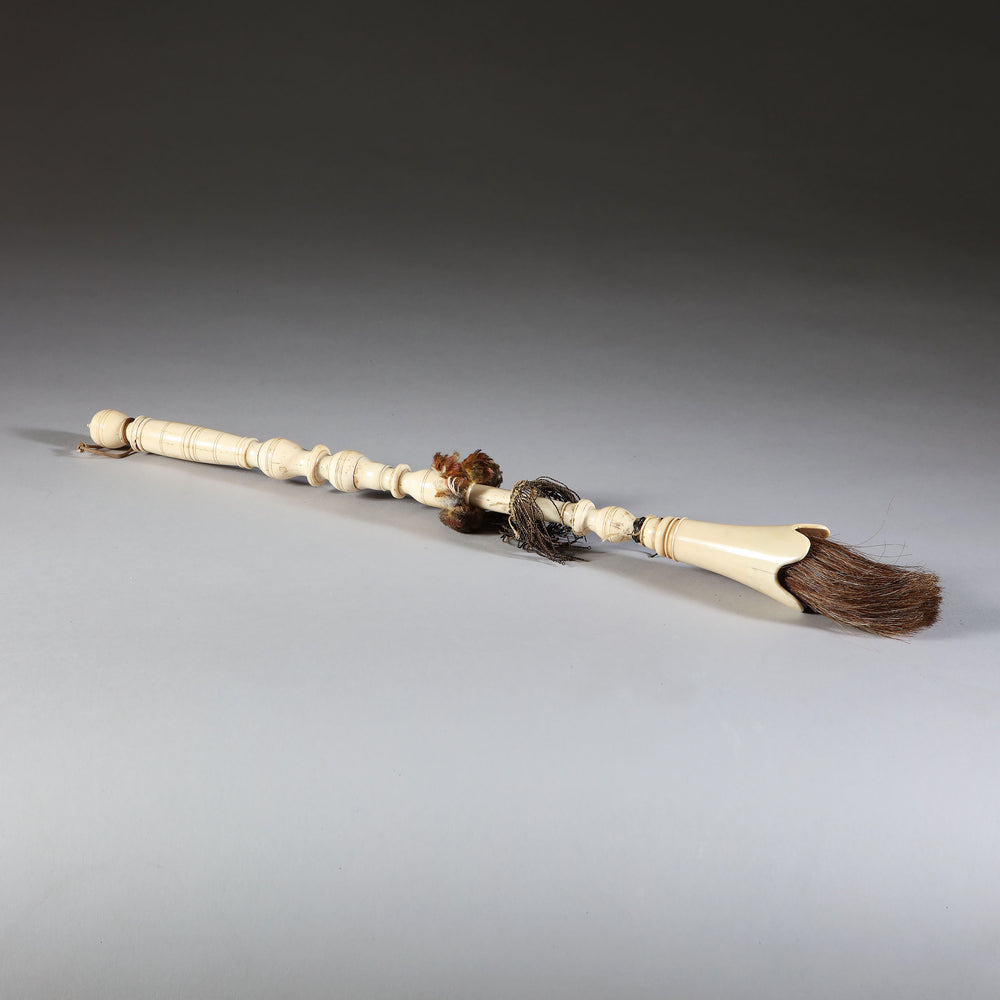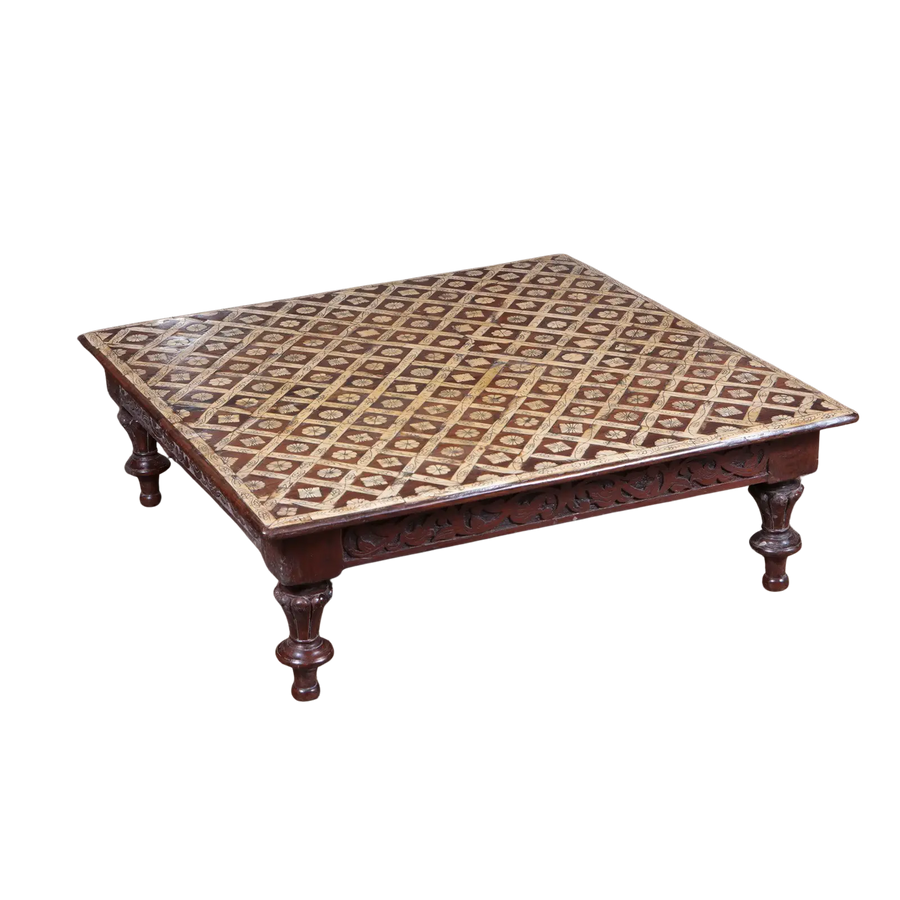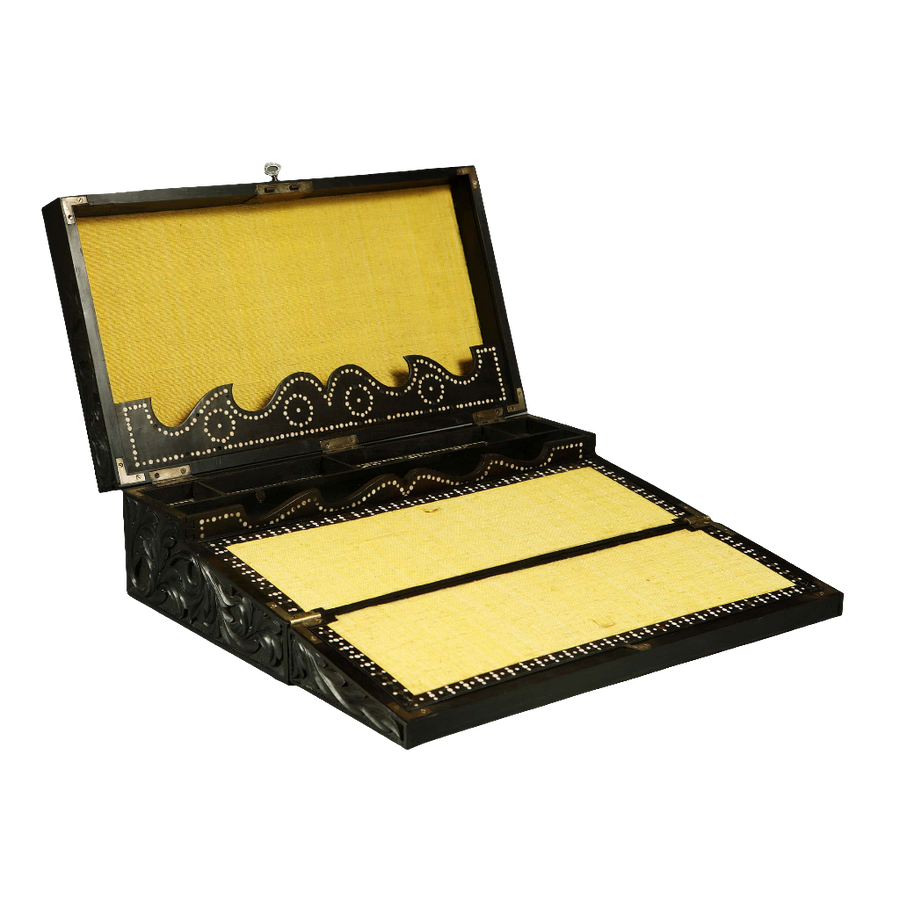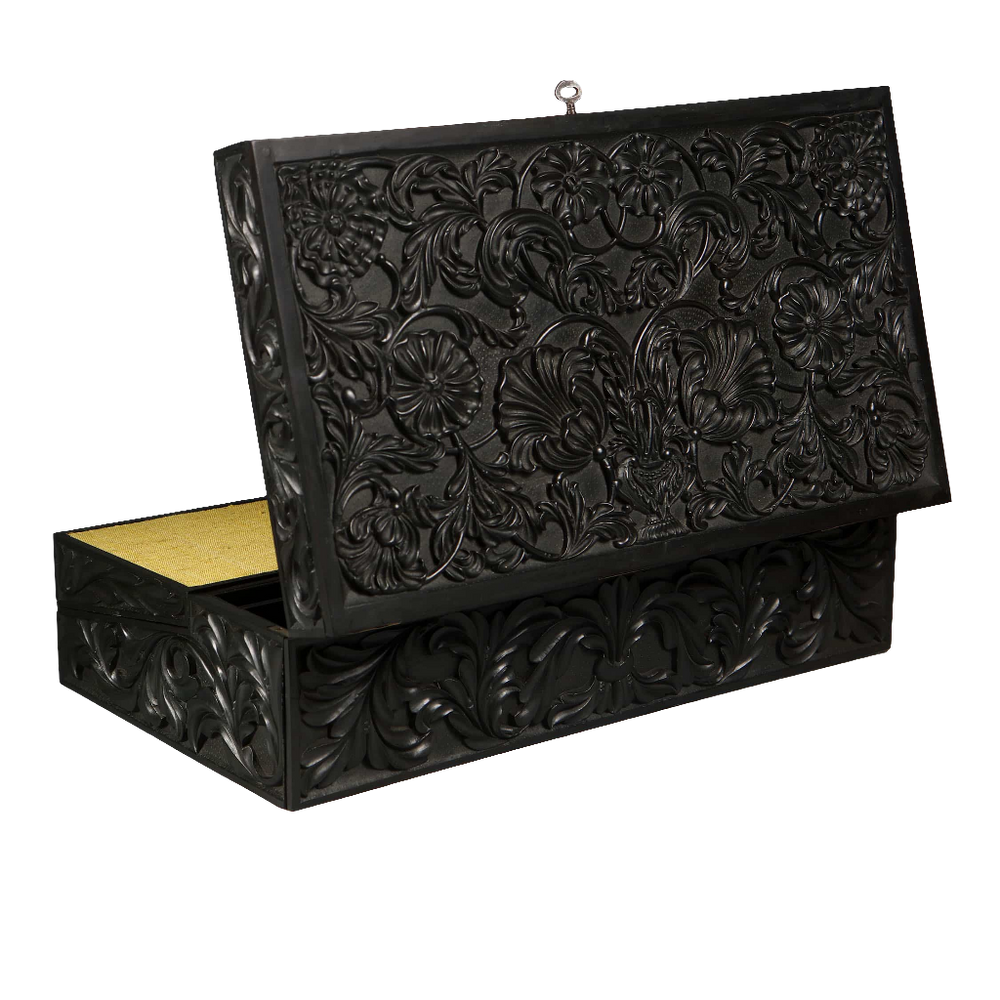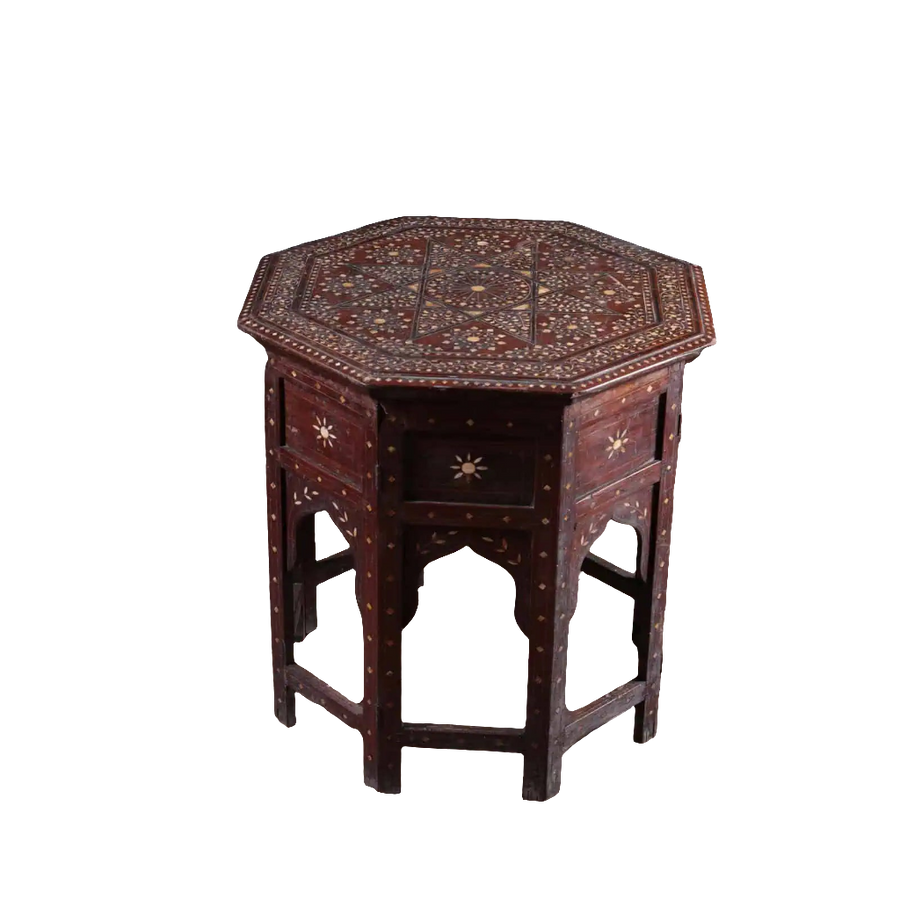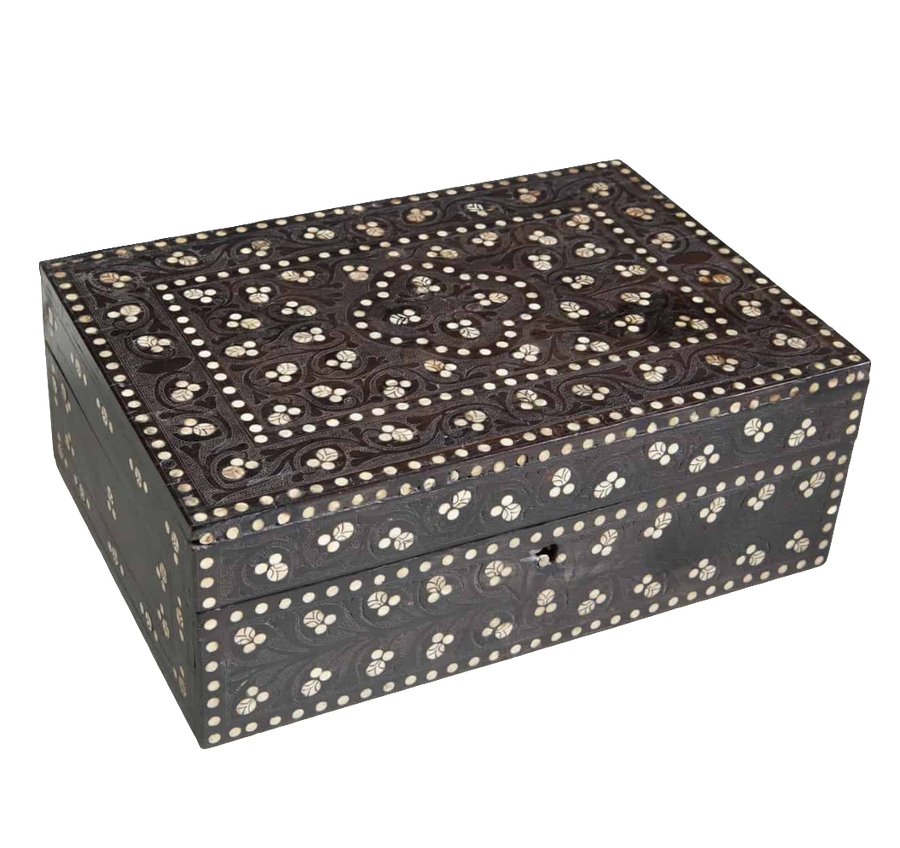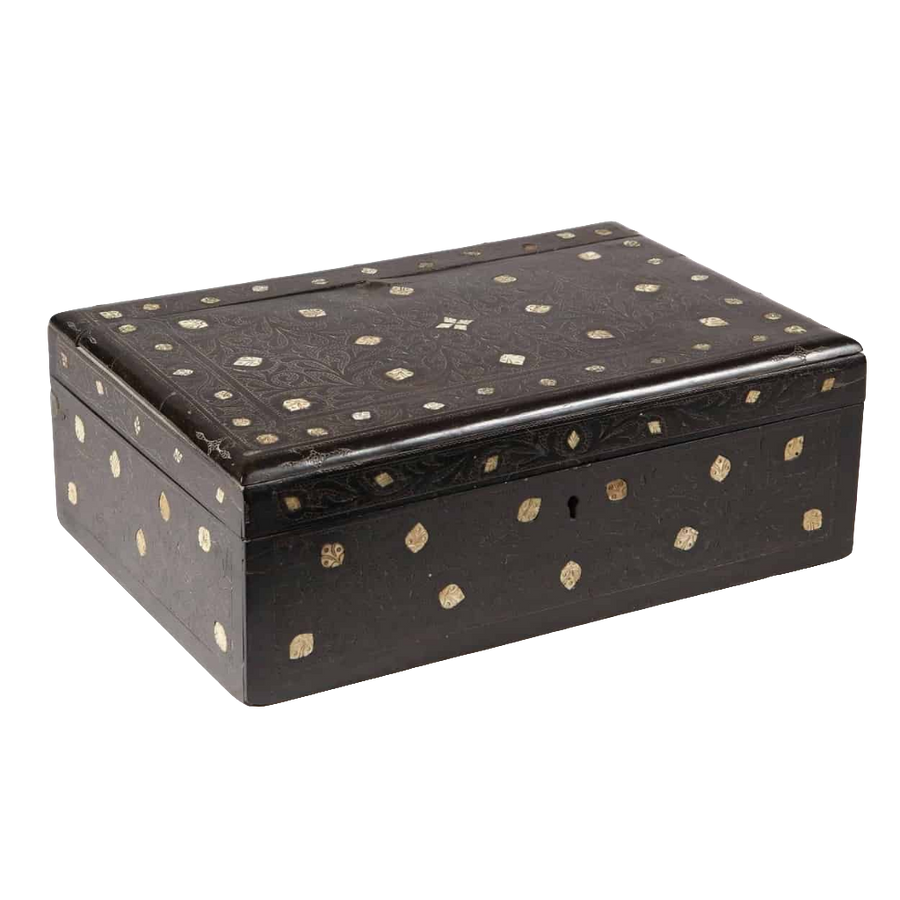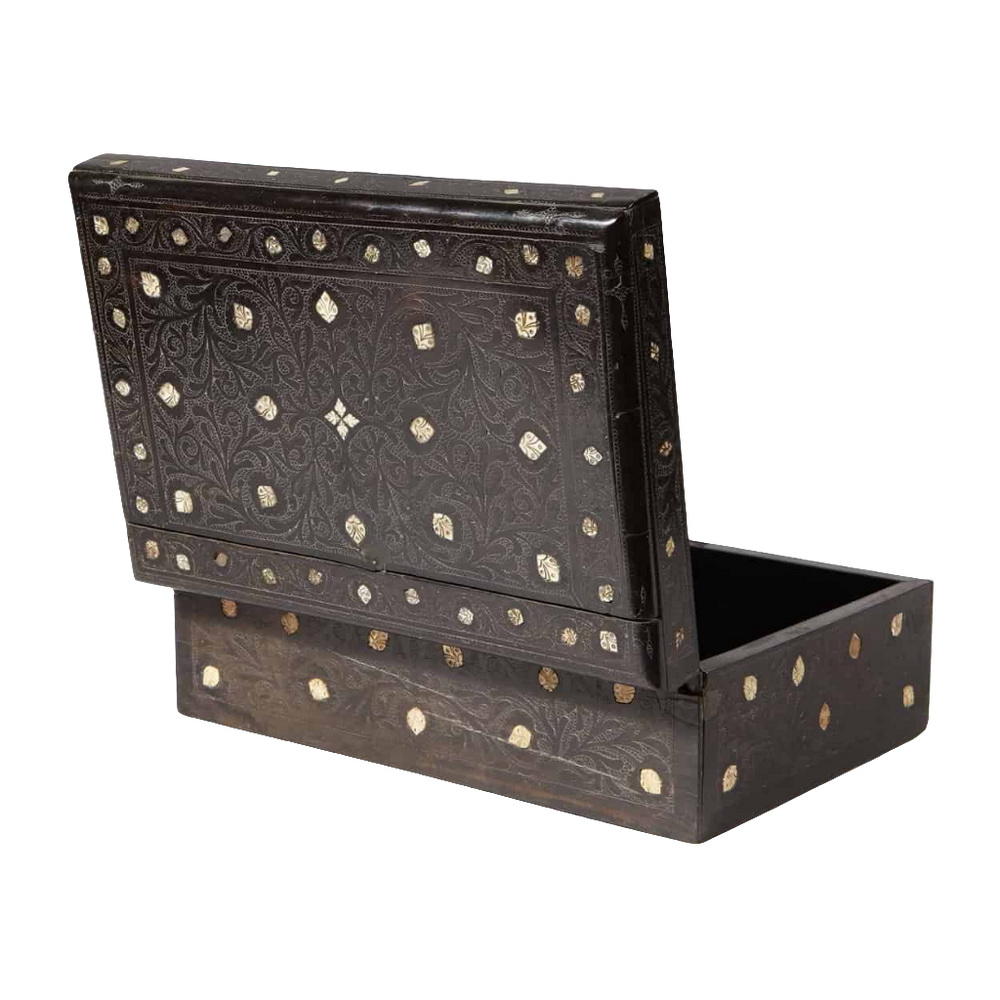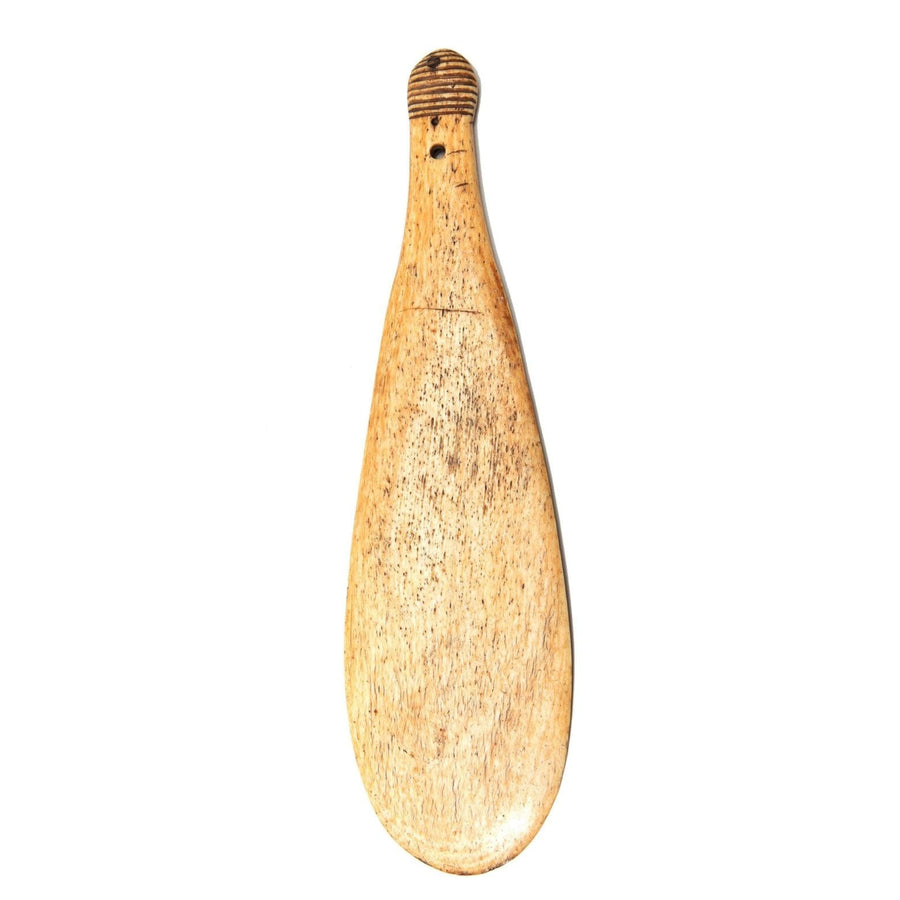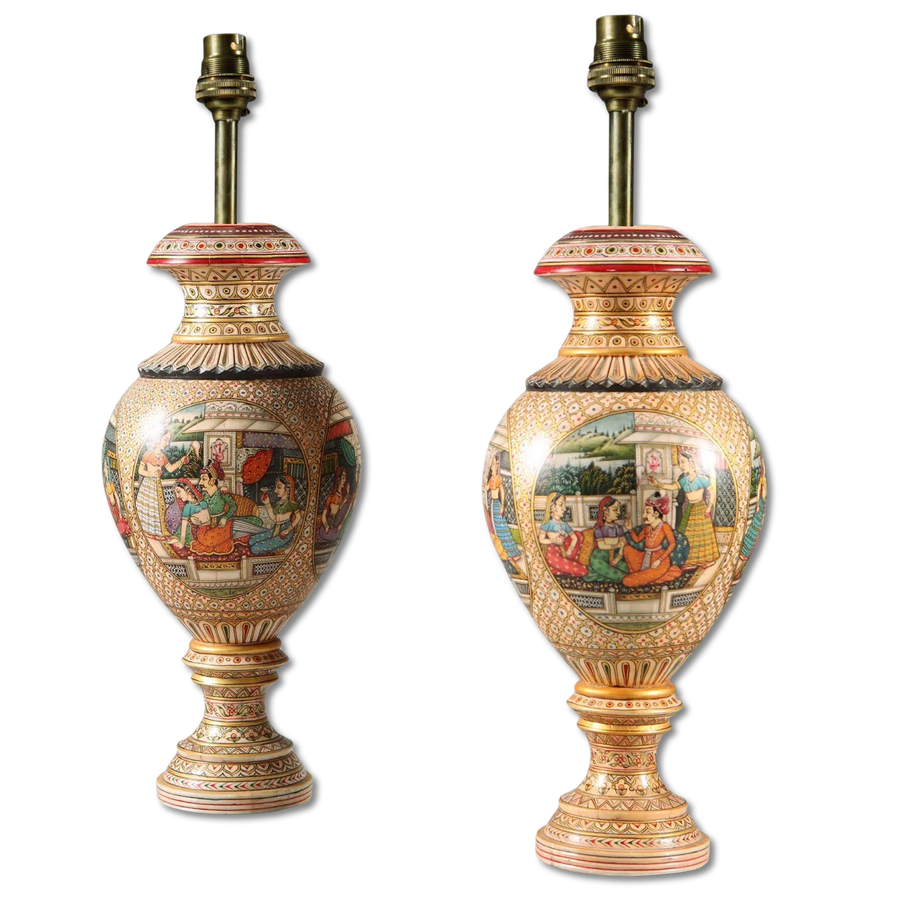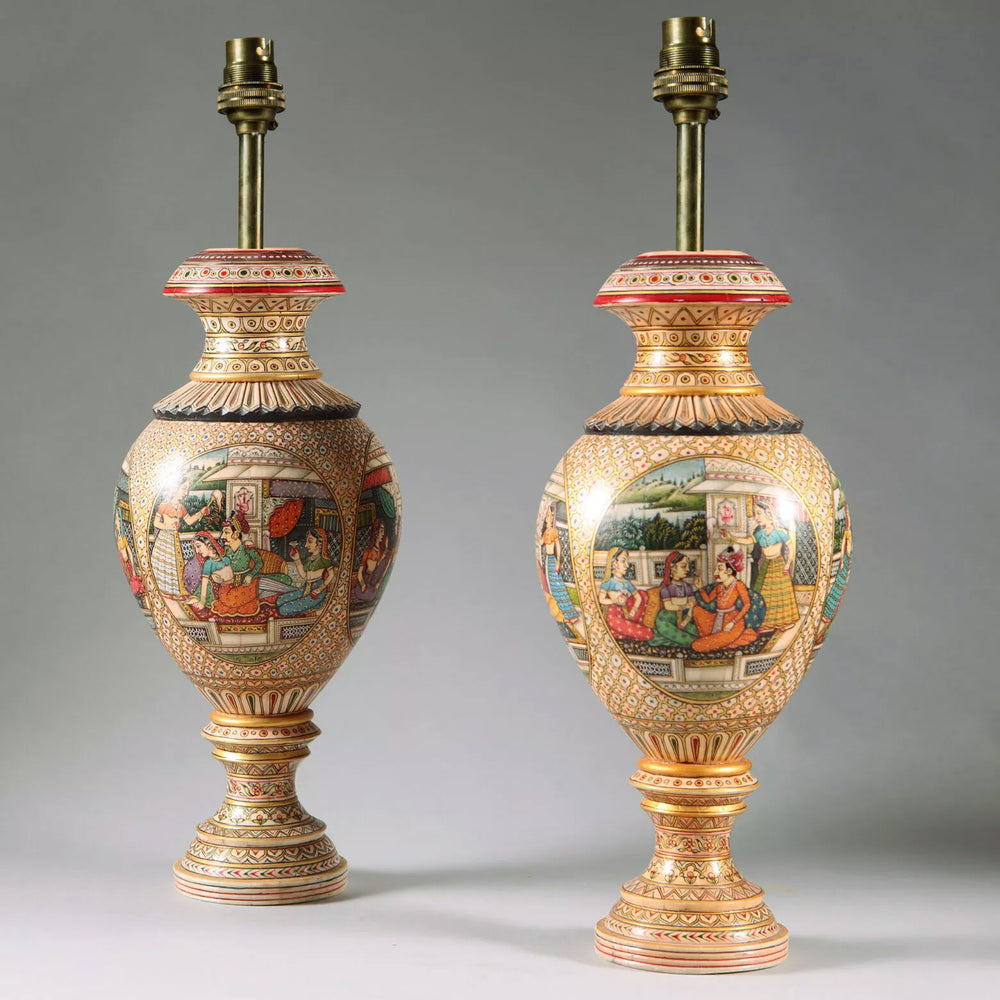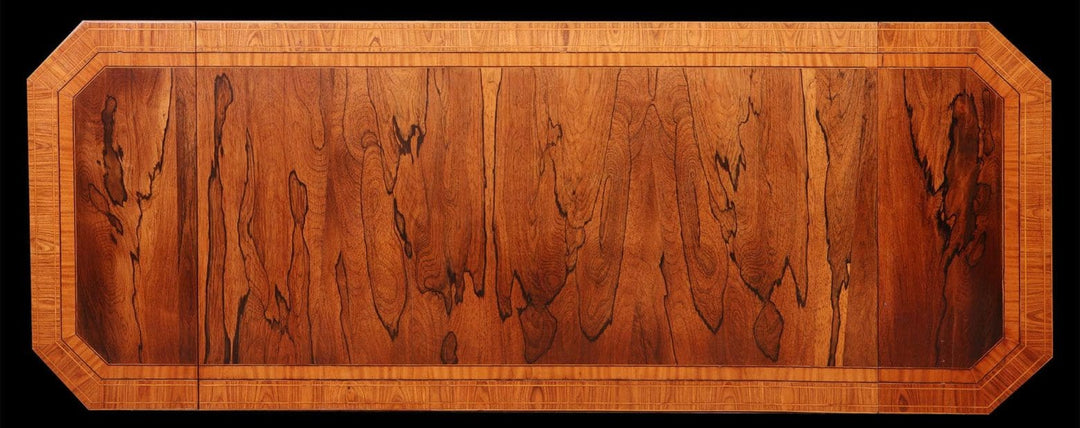Bone is a hard, dense material that forms the skeletal structure of vertebrates, composed primarily of collagen for flexibility and calcium phosphate for strength and rigidity. Historically, bone has been widely used in the production of objects and furniture due to its durability, workability, and availability. Animal bones, particularly from cattle and deer, were fashioned into utilitarian and decorative items such as buttons, combs, knife handles, gaming pieces, and inlays. In antique furniture, bone was often used for intricate decorative elements, including carved motifs and fine inlay work that added refinement to cabinetry and personal items. It also served functional purposes in some historical contexts—for example, whale rib bones were used structurally in the construction of boats and ships. Bone’s distinctive creamy white appearance, combined with its slightly porous texture, makes it both visually appealing and tactilely unique. Unlike rarer and more heavily regulated materials, bone remains a more accessible and ethically viable choice for collectors and restorers, offering both historical authenticity and natural elegance.
Bone is a hard, dense material that forms the skeletal structure of vertebrates, composed primarily of collagen for flexibility and calcium phosphate for strength and rigidity. Historically, bone has been widely used in the production of objects and furniture due to its durability, workability, and availability. Animal bones, particularly from cattle and deer, were fashioned into utilitarian and decorative items such as buttons, combs, knife handles, gaming pieces, and inlays. In antique furniture, bone was often used for intricate decorative elements, including carved motifs and fine inlay work that added refinement to cabinetry and personal items. It also served functional purposes in some historical contexts—for example, whale rib bones were used structurally in the construction of boats and ships. Bone’s distinctive creamy white appearance, combined with its slightly porous texture, makes it both visually appealing and tactilely unique. Unlike rarer and more heavily regulated materials, bone remains a more accessible and ethically viable choice for collectors and restorers, offering both historical authenticity and natural elegance.
Read More






